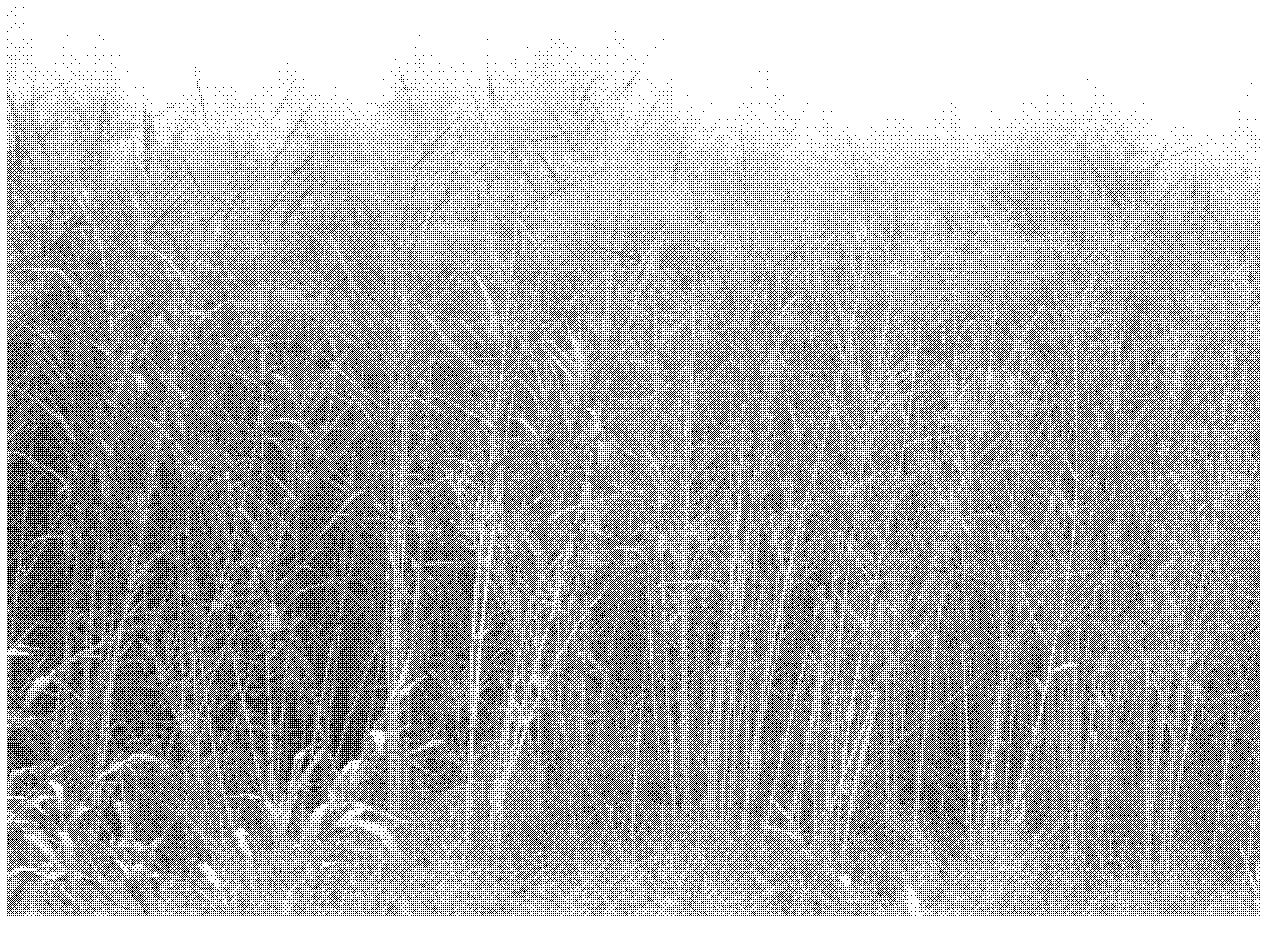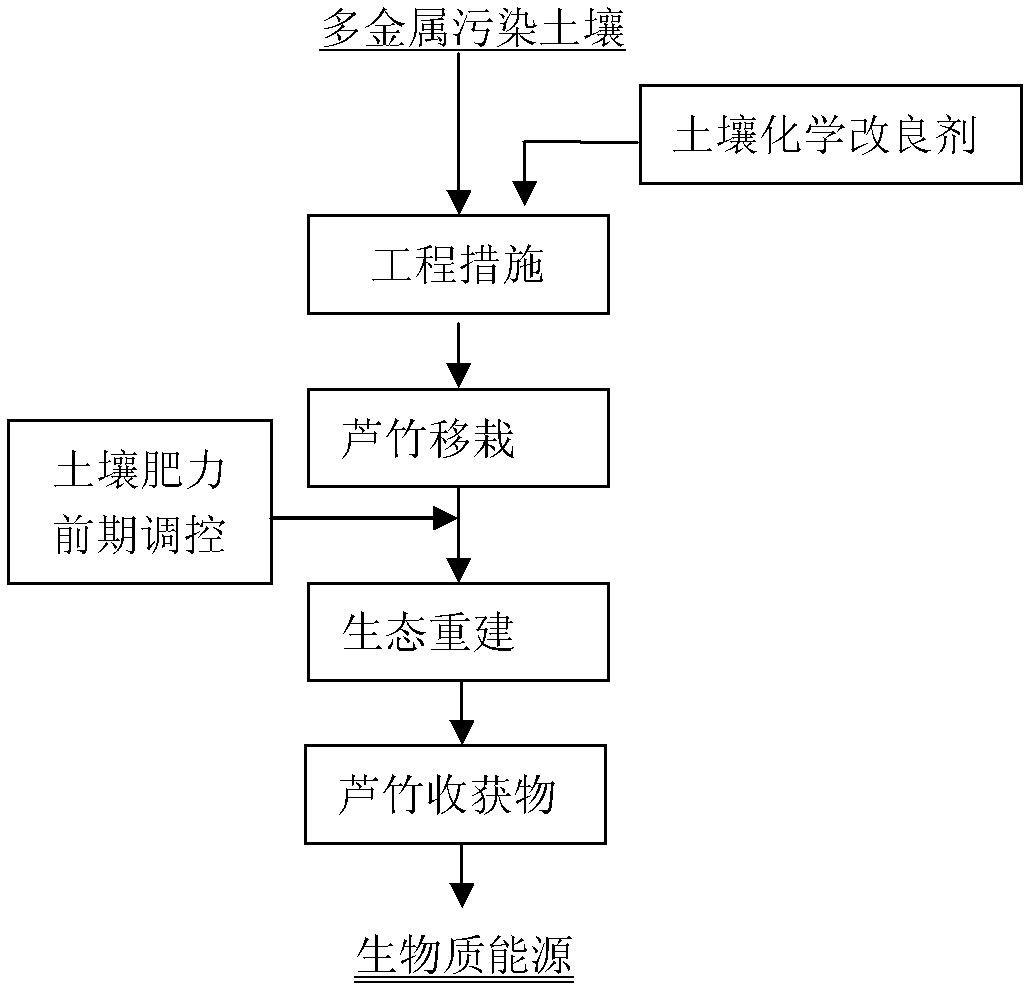Chemical-giant reed combined ecological recovery method of polymetal polluted soil in mining and metallurgy zones
A technology of polluted soil and ecological restoration, applied in the direction of restoration of polluted soil, etc., to achieve the effect of strong operability, good economy, and reducing the degree of heavy metal pollution
- Summary
- Abstract
- Description
- Claims
- Application Information
AI Technical Summary
Problems solved by technology
Method used
Image
Examples
Embodiment 1
[0026] Example 1: Pot experiment of strengthening Arundos reed with chemical modifiers to remediate heavy metal As, Cd, Pb polluted soil. The naturally air-dried test soils with heavy metal contents of As 13.7mg / kg, Cd 1.07mg / kg, and Pb 52.4mg / kgCd were put into the test pots at a rate of 4kg / pot. Add CO(NH 2 ) 2 0.27g / kg, NH 4 h 2 PO 4 0.05g / kg, KNO 3 0.10g / kg soil, mix thoroughly, then add As 80mg / kg, Cd 10mg / kg, Pb 500mg / kg to each pot in turn and mix well with the soil samples to form As, Cd and Pb polymetallic contaminated soil. Add sepiolite 4.0mg / kg soil in each treatment, add deionized water to 70% field water holding capacity. After balancing for 15 days, transplant 2 reed bamboo roots with the same size and a length of 15-20 cm in each pot. All treatments were repeated 3 times, and 70% of field water capacity was maintained during plant growth. Harvest the aerial parts of Arundis arundis after 90 days of cultivation.
[0027] The results show,
[0028] 1...
Embodiment 2
[0037] Embodiment 2: On the abandoned farmland soil polluted by smelting waste water in a certain smelting area, select a field with an area of 100 square meters to carry out a field experiment of chemical-Arundis joint ecological restoration. At the same time, select a field with an area of 100 square meters and a distance of 10m The field soil with similar pollution and natural vegetation was used as a control. The contents of As, Cd, Pb, and Zn in the contaminated soil of the field test sites were 53.2, 31.9, 728, and 968 mg / kg, respectively. The field experiment was started in November 2005, and 22.5kg of calcium magnesium phosphate fertilizer was applied to plow and level the polluted soil; at the same time, Arundis seedlings were transplanted, with a planting depth of 20cm and a planting density of 30-40cm×30- 40cm. In March, 2006, the weeds were weeded twice, and the basal fertilizer (1.5kg) based on nitrogen fertilizer was applied on the field test field of 100 sq...
Embodiment 3
[0038] Example 3: Based on the field test site of 100 square meters of farmland soil polluted by smelting waste water in a smelting area in Example 1, the field test area was expanded to 350 square meters in December 2007, and a chemical-luzhu joint ecological restoration demonstration was established. project( figure 1 ), harvested in November 2009. The demonstration results show that the remediation system forms a stable ecological local system. The height of Arundos arundis on the polluted soil is 2.0-2.5m. The Zn content reaches 2.5-5.5mg / kg, 3.0-17.4mg / kg, 13.6-33.8mg / kg and 83-178mg / kg respectively. In order to further test the stability of the remediation ecological restoration system of reed bamboo, reed reed bamboo was not harvested in 2010, but re-harvested reed reed bamboo in November 2011. The demonstration results showed that after two years of continuous growth of reed reed, the vegetation coverage in the restoration area The plant height is 3.0-4.0m, the thick...
PUM
 Login to View More
Login to View More Abstract
Description
Claims
Application Information
 Login to View More
Login to View More - R&D
- Intellectual Property
- Life Sciences
- Materials
- Tech Scout
- Unparalleled Data Quality
- Higher Quality Content
- 60% Fewer Hallucinations
Browse by: Latest US Patents, China's latest patents, Technical Efficacy Thesaurus, Application Domain, Technology Topic, Popular Technical Reports.
© 2025 PatSnap. All rights reserved.Legal|Privacy policy|Modern Slavery Act Transparency Statement|Sitemap|About US| Contact US: help@patsnap.com



